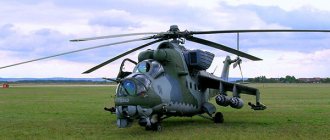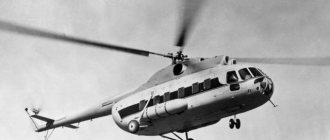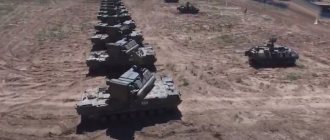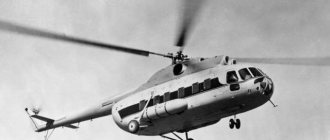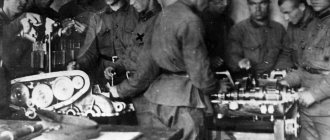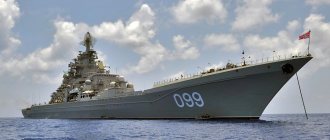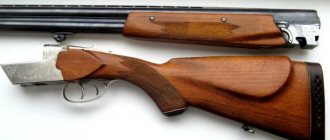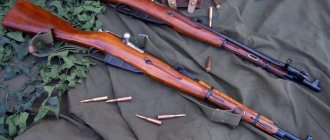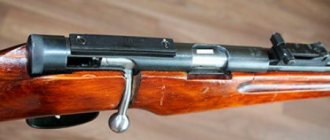In 2015, the Kazan Helicopter Plant plans to start serial production of the Mi-38 helicopter. Photos of the new car and its life-size models were presented back in 1989 during the international aerospace exhibition in Le Bourget. Design work began two years earlier, but only in the early nineties the company began assembling the first prototype. The difficulties, however, did not end there. It took more than a decade for the prospect of a concrete practical implementation to loom before this machine. The fact is that the Mi-38 helicopter was conceived as a replacement for the veteran Mi-8, honored and beloved by aviators in many countries (and primarily Russian). The task is important, but there is hope that the newcomer will not let you down.
Replacing the Mi-8 is a difficult task
The Mi-8 became one of the most popular rotary-wing aircraft in the entire history of world aviation. Its first prototype, still single-engine, took off in the year of Gagarin’s flight. They worked on the design for a long time and carefully. The helicopter turned out to be almost perfectly meeting the requirements for cargo-passenger class vehicles. It can be used for a variety of purposes, both civilian and military. Twelve thousand Mi-8 units of several dozen modifications were built. The range of applications is wide, from agricultural to air assault purposes. More than fifty countries in different climatic zones of the planet have become operators - from the Arctic to the equator and further to Antarctica. Among the countries that purchased this helicopter are the USA, Canada, South Korea, and Finland.
Mi-8s are still produced and purchased to this day. The machine is very reliable, unpretentious and easy to maintain. It is easy and pleasant to operate. To surpass this masterpiece is an ambitious task. The Mi-38 helicopter should be even better, and much better. Fuel efficiency, not so important in the early sixties, is now becoming one of the main aviation parameters. Compared to the Mi-8, it should double, or better yet, triple.
Background to the creation of a new rotorcraft
Back in the early 80s, it became clear in the Soviet Union that the technological resource of the civil aviation helicopter fleet was coming to an end. Despite the fact that the Mi 8 aircraft, available at Aeroflot and other departments, coped with its functions, the country needed a new helicopter. The design of the Mi "eighth" was almost flawless. The successful layout of the helicopter, good avionics and reliable engines ensured this machine a long and productive life. However, time does not stand still. Even such a reliable and easy-to-maintain aircraft as the Mi 8 needed replacement. It was necessary to expand the line of medium helicopters capable of working in a variety of industries.
For the first time, the creation of a new car was discussed at one of the main specialized enterprises in the country. Specialists from the Kazan Helicopter Plant, which was a branch of the Mil design bureau, were able to provide the first sketches and drawings of the helicopter of the future in 1983. A quick glance at the technical documentation made it clear that the new machine would be a fundamentally new aircraft. Despite this, , which was the main customer of the new rotorcraft, placed higher technical requirements on the project.
Until 1987, there was a struggle between design opinions and customer requirements. As a result, the subsequent development of the promising helicopter was moved to the capital, where specialists from the Moscow branch of the Mil Design Bureau took on the development of the project. All work in this direction was headed by A.N. Ivanov.
They first learned about the new Soviet helicopter at the Paris Air Show in Le Bourget, which took place in 1989. Even then it was clear that the USSR would probably be able to create a competitive rotorcraft. It should be noted that at that time the first negative phenomena began to appear in the country’s economy, which inevitably affected the pace of construction of new aircraft. Over the next two years, they managed to create only a full-scale model of the new helicopter, which was presented at the Moscow air show in August 1992. This event took place in a new country. The great aircraft manufacturing power, the Soviet Union, ceased to exist in December 1991.
In the early 90s, during the most difficult period in the history of the development of the helicopter industry, Russian aircraft manufacturers managed to do a lot. In 1993, despite the complete lack of funding for the work, the developers managed to assemble the first two prototypes. From this moment on, slow progress begins towards the creation of a new multi-purpose helicopter for the needs of domestic civil aviation.
External comparison of Mi-8 and Mi-38
At first glance, there are many similarities in the general principles by which the Mi-8 and Mi-38 helicopters are built. The photo of the car demonstrates a certain continuity manifested in the location of the main components and assemblies. The fuselage is made according to a semi-monocoque design, with a flat floor and a rounded aerodynamic ceiling. The landing gear is fixed, three-legged, with a five-bladed main rotor. The pilot's cockpit in the lower part is opaque, unlike the Mi-8 canopy. The shape of the nose is pointed; at the top above it there are no usual protruding fairings of turbine air intakes. The tail rotor is four-bladed. The large fuel tanks located on the sides of the Mi-8 in the lower part of the fuselage are hidden inside the Mi-38. The technical characteristics, however, of these two compared machines are significantly different.
New helicopter concept
The new machine, in accordance with the accepted numbering of the design bureau's products, received the designation - the Mi 38 multi-purpose helicopter. For the first time, a domestic aircraft was created with an eye on existing international norms and standards in the field of ecology and flight safety. The construction of a new rotary-wing aircraft has moved the process of introducing certification of helicopter equipment - the domestic analogue of American and European aircraft airworthiness standards - off the ground. The Russian Federation was well aware of the importance of the issue of creating new models of helicopter technology. In order for work to modernize the helicopter fleet and new developments to move faster, a program for the development of the helicopter industry was adopted in Russia.
The helicopter was created for the following purposes:
- transportation of passengers in all variants (“economy class”, “business class”);
- transportation of cargo for various purposes, both inside the cabin and on an external sling;
- operation in a medical and sanitary setting;
- search and rescue version.
The main customer for the multi-purpose helicopter is the Ministry of Civil Aviation. With this machine it is planned to update the helicopter fleet, represented today by the Mi 8 and Mi 17 machines. The older Mi “eighth” machine can be modernized in accordance with new requirements. Similar modernization requirements are being put forward for the Mi 17 helicopter. However, in the case of the new machine, we are talking about a new generation, middle-class helicopter. The flight performance characteristics of the Mi 38 helicopter, which are included in the project, indicate that the machine will surpass all similar models in terms of load capacity, rate of climb, level of technical flight safety and passenger capacity.
The rotorcraft was created with the expectation of subsequent operation in different climatic conditions. The Russian aircraft will have to become the workhorse of civil aviation for high-latitude polar regions, for regions with hot, sea and changeable mountain climates.
The enormous technological potential that the developers have incorporated into the design of the helicopter, combined with a simplified maintenance scheme, allows the machine to have a wider range of operation. Mi "thirty-eighth" is of interest to all departments that, one way or another, are faced with the need for highly mobile air transportation. In terms of automation level, the new Russian aircraft is recognized as the most automated flying complex. Flight navigation equipment will be installed on board the aircraft to ensure automatic flight, including takeoff, landing and hovering at a certain altitude. The vehicle is a promising development, as evidenced by the great interest shown by the military in the Mi 38. In the future, it is planned to use the helicopter for military purposes. A set of radar equipment and a set of weapons for this model are at the development and design stage.
Technical indicators
Firstly, the practical range has increased. With a full fuel supply of 3,796 liters, the Mi-38 helicopter can fly 800 km (for the Mi-8, depending on the modification, this figure ranges from 425 to 590 km). The cargo compartment has become larger, its dimensions are 8630 mm (length), 2400 mm (width) and 1850 mm (height). Load capacity reached 6 tons. The speed also increased: for the Mi-8 it averaged 225 km/h, which is 65 km/h lower than for the Mi-38. The technical characteristics of the new machine also compare favorably in terms of ceiling; in 2012, it set a world record of 8600 m, but the following year it turned out that the veteran helicopter Mi-8MSB, if equipped with engines of the new type TV3-117VMA- SBM1V is also capable of something. He rose to a new record height of 9150 meters. The rate of climb, however, remained “unbroken”: in 6 minutes only the Mi-38 can climb three thousand meters. The characteristics of this machine, therefore, promise it a long and successful career in Aeroflot, the Air Force, and abroad.
YaPEDMKHI RPYUMYAONPRN-OYYAYUFHPYAYKHI BePRNKER lH-38
PYUGPYUAYURSHBUERYA ON GYUYUGS TSPYUFDUMYAYNI YUBHYUZHHH DK GULEMSH OYUPYU RPYUMYAONPRMN-OYUYAYUFHPYAYHU lH-8 X lH-17. ON YAPYUBMEMHCH I lH-17 BEPRNKER lH-38 HLEER ANKEE BLEYARHREKEMSCH TsPSGNOYUYUFHPYAYSCH YUAHMS KH ANKEE ShPTsNMNLHVMSCH YYUAHMS OKHKNRNB, PYuYAYAVKHRYUMMSCH MU SHCHYHOYUF KH DBSU VEKNB HEY. pYUGPYUANRYU BEPRNKERYU lH-38 BEDERYA B PYULYUU YANBLEYARMNTSN OPEDOPHYRH "EBPN-lHKE". mu OEPBNL ShRyuoe YANGDUERYA BYUPHYUMR BEPRNKERY I DBHTSUREKEL Pratt&Whitney Canada PW-127T/S. lH-38 - BEPRNKER MNBNTSN ONYNKEMKH, YAONYANAY NAEYAOEVHRE MNBSHI SPNBME YARYUMDYUPRNB YNLTNPRYU KH AEGNOYUMNYARH OPH BSHONKMEMHKH OYAYAYUFHPYAYKH OEPEBNGNY X YAOEZHYUKEMSHU PU ANR ON YURETSNPKHH yu (FAR-29).
mYUGMYUVEMHE. lH-38 - OPEDMYUGMYUVEM DK OEPEBNGYH OYYAYAYUFHPNB (BYKCHVYU VIP OEPEBNGYH), OEPEBNGYH TsPSGNB BMSRPKH YYUAKHMSH KH MU BMEMEY ONDBEYAYE, ONKHYAINBN-YAOYUYUREKEMSHU NOEP YUZHHI, YU RUYFE DK SHBYYUSHHH ANKEMSHU. lH-38 KHLEER BLEYARHREKEMSCH YUAHMS, DBPE-RPYUO ON KEBNLS ANPRS X TsPSGNBSCH YADBKHTSUELSCH DBPE ON OPYUBNLS ANPRS. b DBEPH ON OPYUBNLS ANPRS LNFER SYARYUMYUBKHBUREYA ANPRRNBU KEAEDYU TsPSGNONDZELMNYARECH DN 300 YTS. b ZHEMRPE ONKYU KHLEERYA KCHY, B YNRNPNL SYARYUMYUBKHBUERYA YAHYARELYU BMEMEI ONDBEYAYKH, PYYAYAVKHRYUMMYU MU TsPSGSH BEYANL DN 7000 YTS. yNLTNPRYUAEKEMSHI OYYAYYUFHPYAYKHI YYUKNM MU 30 LESR I YUTSNL YPEYAEK 0.765 L X LHMHLYUKEMNI BHPHMNI OPUNDU - 0.38 L. b OYYAYUFHPYAYNI YYUAHME OPEDSYALYURPHBUERYA Kommersant ASTER, NRDEKEMHE I ONKYULH DK PUGLEYEMH AYUTSYUFYU, RSYUKER. dK YANGDYUMKH YNLTNPRMSHU SYAKNBHI B YYUAHME SHCHYHOYUFYU H TsPSGNOYUYUFHPYAYNI YUAHME BEPRNKER NANPSDSERYYAKHYARELNI YNMDKHZHNMHPNBYUMKH KH BEMRKHKJHH. oYAYAYUFHPYAYU YYUAHMY NANPSDSERYA YAOEZHYUKEMSHLH BSHUNDYULH KCHYYULH DK ASHIARPNTSN ONYKHDUMHYU B YUBYUPKHIMNI YAHRSYUZHKH, DK OYUYAYUFHPNB X SHCHYHOYUFYU OPEDSYALYURPH BYUCHRYA YAOYUYUREKEMSHE FKHKERSH, BEPRNKER NANPSDSERYYA YAOYUYUREKEMSHL OKNRNL X YUBYUPKHIMN-YAOYUYUREKEMNI sib-PUDHNYARYUMZHKHEI, B YAYUMHRYUPMNL BYUPHYUMRE B TsPSGNOYUYUFHPAYNI YUAHME LNTsSR ASHR PUGLEYEMSH 16 MNYAHKNY. oPEDSYALNRPEMN NANPSDNBYUMKHE BEPRNKERYU YAKHYARELNI YUBYUPKHIMNTSN OPHBNDMEMKH. lH-38 NYAMYUYYUERYA MNBEIHL OKKNRYuFMN-MYUBKHTSYUZHNMMSHL YNLOKEYANL, ONGBNKYYYHL NYASYYYARBKRE YARYUAHKKHYUZHCH STSKNBSHU ONKNFEMKHI BEPRNKERYU B ONKERE ON YPEMS, YSPYAS KH BSHIANRE, YNMRPNKE PYUANRSH DBKHTSYUREK, RPYUMYALHYAYAHH, YNMRPNKE PYUANRSH OPHANPMNTSN NANPSDNBYUMKH. lH-38 NYAMYUYEM YAOSRMKHYNBNI MYUBKHTSYUZHNMMNI YAHYARELNI. dK NRNAPYUFEMH KHMTNPLYUZHHH YUAHMYU SHYHOYUFYU NANPSDNBYUMYU ZHBERMSHLH LMNTsNTSMYZHNMYUKEMSHLH DHYAOKELH. onNKSVEMKHE PUDHNKNYUZHNMMNI X PUDHNREUMKHVEYAYNI KHMTNPLYUZHKH NAEYAOEVKHBUERYA I ONLNYECH MYUBKHTSYUZHNMMNTSN LERENKNYURNPYU. mu lH-38 OKYUMKHPSERYA PEYUKKHGYUZHKH REUMNKNTSXX NAYAKSFKHBYUMKH ON YANYARNMHCH. sDEKEMYU RPSDNELINYARE REUMKHVEYAYNTSN NAYAKSPHHBYUMH YAMHFEMYU OH YAPYUBMEMHCH I BEPRNKERNL lH-8 OPHLEPMN B 2 PYUGYU YAVER BYARPNEMMNI YAKHYARELSH YUBRNLYURKHGHPNBYUMMNTSN YNMRP NK KHYAOPYUBMNYARKH ANPRNBNTSN NANPSDNBYUMH KH DBKHTSUREKEY, YANIPYUYYEMKH YNKKHVEYARBU SGKNB YALUGYKH.
yNMYARPSYZHH. bePRNKER NDMNBKHMRNBNI YAUELSH HLEER SDKHMEMMSHI TCHGEKF, B “HMYARPSYZHKH YNRNPNTSN OPHLEMCHRYA RPEUYAKNIMSHE OYUMEKKH X DERYUKKH XG YNLONGHRMSHU LUREPHYUKNB. еYARHKNOYUYARMYU BRSKYU MEYASYYETSN BKHMRYU NANPSDNBYUMYU SHKYUYARNLEPMSHLH ONDHOMKHYULH DK YPEOKEMHЪ MEYASYYETSN BKHMRYU. pYUGLEYEMKHE DBKHTSUREKEY GYU TSKYUBMSHL PEDSYRNPNNL YAMHFUER SPNBEME ESLY B YUAHME H ONBSHUER AEGNOYUYAMNYARE OPH YUBYUPKHIMNI ONYUDYE. kNOYUYARKH MEYASYYETSN X PSKEBNTSN BKHMRNB KHGTSNRYUBKHBUCHRYA KH YAREIKNSTSKEOKYYARHYU MN REUMNKNTSXX MEOPEPSHBMNI MYULNRYKH. dK GYUYHRSH NR NAKEDEMH KNOYUYARKH MEYASYYETSN H PSKEBNTSN BKHMRNB, YU RUYFE OEPEDMHE YARNHKYU YUAHMSH SHCHYHOYUFYU, OPHELMKHY BNGDSMNTSN DYUBKEMKHЪ H OEPEDMJ VYUYARE O SHKEGYUYKHRMNTSN SYARPNIYARBU NAPSDSCHRYA SHKEIRPNREOKNBNI OPNRKHBNNAKEDKHMHREKEMNI YAKHYARELNI. YAKHARELYU SHKEYRPNYAMYUAFEMKH DSAKKHPPNBYUMMYU. TsKhDPYUBKHVEYAYU YAKHYARELYU BEPRNKERYU YANYARNHR HG RPEU YUBRNMNLMSHU TsKHDPNYAKHYAREL. OND TsPSGNBSHL ONKNL PYUGLEYUCHRYA 6 LTSYKHU RNKOKHBMSHU AYUINB NAYEI ELINYARECH 3796 K. dK OPETSNMNVMSHU ONKERNB DUKEMNYARECH DN 1300 YL B TsPSGNBNI YUAKHME BEPRNKERYU LNFER SYARYUMYUBKHBUREYA DNONKMHREKEMSHI RNOXBMSHHI AYUY. UPNMNNKNTSKH YANGDYUMKH. mYuVYUKN OPEGEMRYUZHH LNDEKH B KE ASPFE — 1989 Ts. LUYER — YUBTSSYAR 1991 Ts. opeGEMRYUZHH MYURSPMNTSN LUYERU — lnyayushchPNNS — 1992 Ts. mYuVYu KN KHGTSNRNBKEMKH DBSU NOSHRMSHU SHYGELOKPNB - 1993 Ts. oPEGEMRYUZHK DNPYUANRYUMMNTSN LUYERYU - lyuya-95.
YANYARNMHE. b 1994-1999 CC. OPNBEDEMN PUANVEE OPNEIRKHPNBYUMHE, GYUBEPYEMYU ONYARPNIYU NOSHRMSHU NAPYUGZHNB DK YARURHVEYAYKHU KH DHMYULKHVEYAYKHU HYAOSHRYUMKHI. b 2001 C. OPNBEDEMSH KERMSHE HYAOSHRYUMKH YNLOKEYRYU KNOYUYAREI MU KERYUCHYEI KYUANPURNPHKH, YANGDUMMNI MU AYUGE BEPRNKERYU lH-17. b YAEPEDHME 2003 Ts. ONYAKE OPNBEDEMKH GYUBNDAYKHU HYAOSHRYUMKHI SVYARMHYYULH NAZEDKHMEMKH ASDER OPKHMHLUREYA PEYEMKHE N YARPNHREKEYARBE DPSTSKHU OPNRNRKHONB, JAPNYYU YAEPRHTHYUZHHH MYUVYUKE YAEPKHIMNTSN OPNKHGBNDYARBU.
22 DAYUAP 2003 Ts. MU YUSCHPNDPNLE yUGYUMYAYNTSN BEPRNKERMNTSN GYUBNDYU YANYARNKYA OEPBSHI ONKER LMNTSNZHEKEBNTSN BEPRNKERYU MNBNTsN ONYNKEMKH LH-38.
eTsN BSHONKMHKH KERVHYH-HYAOSHRYUREKH lbg KHL. lk.lHKЪ b.m.yNBRYUMHM X y.l.ykhlnb. ONKER OPNDNKFYUKYA 6 LHMSR. mu YAKEDSCHYKHI DEME BEPRNKER DELNMYARPHPNBUKH B BNGDSUE NTHZHHYUKEMSHL KHJUL pt: BHZHE-OPELEEPS a.yayuKEHMS, TsEMEPYUKEMNLS DKHPEYRNPS “pNYYUBHYUYNYALNYaU” h.m.yNO REBS X DP. cru:
| lNDHTHYUZHH | lH-38 |
| dHYULERP MEYASYYETSN BHMRYU, L | 21.10 |
| dHYULERP PSKEBNTSN BHMRYU, L | 3.84 |
| dKHMYu,L | 25.22 |
| bSHYANRYU,L | 5.56 |
| bHPHMYU, L | 4.50 |
| I love it, JC | |
| OSYARNCN | 8300 |
| MNPLYUKEMYU BGKERMYU | 14200 |
| LYUYAHLYUKEMYU BGKERMYU | 15600 |
| RHO DBKHTSUREK | 2 cylinders PW-127T/S |
| lnymnyare, K.Ya. | 2 U 2500 |
| LYUYAKHLYUKEMYU YAYNPNYARE, YL/V | 285 |
| yPEIYEPYAYU YAYNPNYARE, YL/V | 275 |
| oEPETSNMNVMYU DUKEMNYARE, YL | 1350 |
| oPUYRHVEYAYU DUKEMNYARE, YL | 820 |
| pYUDKHSYA DEYARBKH, YL | 325 |
| oPUYIRKHVEYAYKHI ONRNNKNY, L | 5200 |
| YaRYURKHVEYAYKHI ONRNNKNY, L | 2500 |
| ShYKHOYUF, VEK | 2 |
| ONKEGMYU MYUTSPSGYU: | 32 OYYAYUFHPYU KKH 5000 YTS TsPSGYU B YYUAHME KHKH DN 6000 YTS TsPSGYU MU ONDBEYAYE |
| bottom. KhMTNPLYUZHKH: |
| tNRNCPYUTHH: | oEPBSHI ONKER lH-38 |
| oEPBSHI NAPYUGEZH lH-38 | |
| oEPBSHI NAPYUGEZH lH-38 | |
| HYAOSHRYUREKEMSHI ONKER LH-38 B YUBTSSYARE 2004 TsNDYU | |
| HYAOSHRYUREKEMSHI ONKER lH-38 B NYRYAPE 2004 TsNDYU | |
| lH-38 MU lyuyaE | |
| lH-38 MU lyuyaE |
IWELSH:
| lH-38 |
bYUPHYUMRSH NYPYYAYH:
| lH-38 |
| YaOHYANY HYARNVMKHYNB: |
| YURYUKNTS "bePRNKERMSHI LHP pNYAYAKH 2003" lNYAYNBYAYKHI BEPRNKERMSHI GYUBND KHLEMKH l. k. lHKЪ. rPYUMYAONPRMN-OYUYAYUFHPYAYKHI BEPRNKER lH-38 LYUYAHL YARYUPNYARKHM. bYAE BEPRNKERSH lHPYU. lHKE lH-38 lHP yuBHYUZHHH. MNBSHI RPYUMYAONPRMSHI BEPRNKER lH-38 YUBKHYUZHKH bPEL. oEPBSHI ONKER BEPRNKERYU lH-38 e.h.pSFHZHYHI. bEPRNKERSH |
sTSNKNY MEAYU. 2004
Technological innovations in materials
Gone are the days when aircraft all over the world were made only from duralumin. The Mi-38 helicopter is made with extensive use of plastic and composite materials. The blades of both propellers have a multi-layer structure and are made using the winding method, which ensures their high elasticity and an almost unlimited service life (at least during the entire operation of the machine). Polymer material is also used in the manufacture of main and tail rotor bushings (so-called elastomeric bearings are installed), as a result of which lubrication is not required for these components. Three-layer sandwich panels were used in the manufacture of non-power fuselage elements (hoods, cockpit, instrument panels, outer surface of the ramp and beam fairings). The combined skin consists of an outer metal and inner polymer-honeycomb layers.
Power point
Ideally, the power required for efficient operation of the machine is 5000 hp. With. It is developed by two engines. There were two options for completing the Mi-38 power plant. 2 Pratt & Whitney Canada turboshaft engines develop the required force, providing the required economic performance. Their operation is controlled by a booster system with triple redundancy. This scheme was dictated by the high export potential of the new car. In 1990, it was assumed that it would be produced by a specially created Euromil joint venture, the shareholders of which would be the plant named after. Mil, Kazan Helicopter and NPO named after. V.Ya.Klimova. Hopes, however, were not justified; after 13 years, the European concern left the board of the joint venture, although it continues to cooperate with it on mutually beneficial terms. Most likely, production samples will be equipped with Klimov TV7-117V engines, which are no worse than their overseas counterparts, although they have slightly less power (2 x 2350 = 4700 hp), but will quite successfully be able to lift the Mi-38. The helicopter, whose performance will suffer slightly from this, will remain independent of import supplies.
Devices
The modern IBKO-38 avionics complex has been developed and manufactured; it uses “transparent cockpit” technology. This means that thanks to the instruments, the crew will be able to have an all-round view, visually assessing the situation around the aircraft and below it. The pilots' workstations are equipped with five liquid crystal displays; the computer complex digitally controls the modes of the engines and all on-board equipment. The autopilot also operates on a BEVM. The navigation is equipped with a Doppler speedometer. In the bow there is a radar that, in addition to the spatial position of the vehicle, evaluates weather conditions. There is also a separate television camera that allows you to monitor the position of the load on the external sling. Mass and centering characteristics are assessed automatically.
Security questions
To successfully pass international certification, any aircraft manufacturer must ensure compliance with a number of conditions of the international organization ICAO. A total of four prototypes have been produced to date. The latest Mi-38 (OP-4) differs from the previous one in the presence of a fuel system that can withstand strong impacts on the ground. Thus, a high level of fire safety is achieved. The landing gear, which absorbs the impulse from a collision with the ground at high descent speeds, is also a measure to increase the survivability of the crew and passengers in the event of an emergency situation, but they were structurally provided for already during the development of previous copies (OP-2 and OP-3) of the Mi-38 helicopter.
2014 marked the completion date of all testing activities and the end of preliminary design work. After the launch of mass production, design improvements will undoubtedly continue, including in terms of increasing operational safety.
[edit] Notes
- [1]
- [2]
- [3]
- [4]
- [5]
- [6]
- [7]
- [8]
- [9]
- [10]
- [11]
- [12]
- [13]
| Mi-38 | |
| Story | XX century • XXI century |
| Europe | Austria • Albania • Andorra • Belarus • Belgium • Bulgaria • Bosnia and Herzegovina • Vatican City • Great Britain • Hungary • Germany • Greece • Denmark • Ireland • Iceland • Spain • Italy • Latvia • Lithuania • Liechtenstein • Luxembourg • Malta • Moldova • Monaco • Netherlands • Norway • Poland • Portugal • Russia • Romania • San Marino • North Macedonia • Serbia • Slovakia • Slovenia • Ukraine • Finland • France • Croatia • Montenegro • Czech Republic • Switzerland • Sweden • Estonia |
| Asia | Abkhazia • Azerbaijan • Armenia • Afghanistan • Bangladesh • Bahrain • Brunei • Bhutan • East Timor • Vietnam • Georgia • Israel • India • Indonesia • Jordan • Iraq • Iran • Yemen • Kazakhstan • Cambodia • Qatar • Cyprus • Kyrgyzstan • China • North Korea • Kuwait • Laos • Lebanon • Malaysia • Maldives • Mongolia • Myanmar • Nepal • UAE • Oman • Pakistan • Palestine • Saudi Arabia • Singapore • Syria • Tajikistan • Thailand • Turkmenistan • Turkey • Uzbekistan • Philippines • Sri Lanka • South Korea • South Ossetia • Japan |
| America | Antigua and Barbuda • Argentina • Bahamas • Barbados • Belize • Bolivia • Brazil • Venezuela • Haiti • Guatemala • Honduras • Grenada • Dominica • Dominican Republic • Canada • Colombia • Costa Rica • Cuba • Mexico • Nicaragua • Panama • Paraguay • Peru • El Salvador • Saint Vincent and the Grenadines • Saint Kitts and Nevis • Saint Lucia • Suriname • USA • Trinidad and Tobago • Uruguay • Chile • Ecuador • Jamaica |
| Africa | Algeria • Angola • Benin • Botswana • Burkina Faso • Burundi • Gabon • Gambia • Ghana • Guinea • Guinea-Bissau • Djibouti • DR Congo • Egypt • Zambia • Western Sahara • Zimbabwe • Cape Verde • Cameroon • Kenya • Comoros • Congo • Ivory Coast • Lesotho • Liberia • Libya • Mauritius • Mauritania • Madagascar • Malawi • Mali • Morocco • Mozambique • Namibia • Niger • Nigeria • Rwanda • Sao Tome and Principe • Seychelles • Senegal • Somalia • Sudan • Sierra Leone • Tanzania • Togo • Tunisia • Uganda • Central African Republic • Chad • Equatorial Guinea • Eritrea • Eswatini • Ethiopia • South Africa • South Sudan |
| Australia and Oceania | Australia • New Zealand • Palau • Vanuatu • Kiribati • Marshall Islands • Nauru • Papua New Guinea • Samoa • Solomon Islands • Tonga • Tuvalu • Federated States of Micronesia • Fiji |
| Themes | Development • Production • Components and materials • Comparison with analogues |
Source - ""
Categories: Mi-38 | Accessories
Loading and unloading options
Already during the development of the basic model, specialists from the Design Bureau named after. Mil understood that since they were creating a multi-purpose machine, it should be adapted to solve the widest possible range of problems. To do this, you need to consider the possibility of a fairly simple construction of profile modifications based on the basic scheme. First you need a passenger car (in this version it seats 32 people). We should also not forget about the needs of the armed forces; the Ministry of Defense is a profitable and reliable customer. The national economy will also need a replacement for the Mi-8, therefore, a cargo modification is also needed. The Ministry of Emergency Situations will need an ambulance helicopter. And then - time will tell.
In all cases, the machine requires simple, reliable and convenient means of loading and rigging. The Mi-38 helicopter is equipped with all this. The photo of the cargo compartment amazes with the thoughtfulness of the arrangement of all the components designed to solve this problem. The cargo ramp is 1800 mm wide and is equipped with a lifting mechanism with remote hydraulic control. A universal winch with a high (300 kg) load capacity is mounted in the opening of the side cargo door, and movements inside the cabin are made easier thanks to removable roller tracks.
